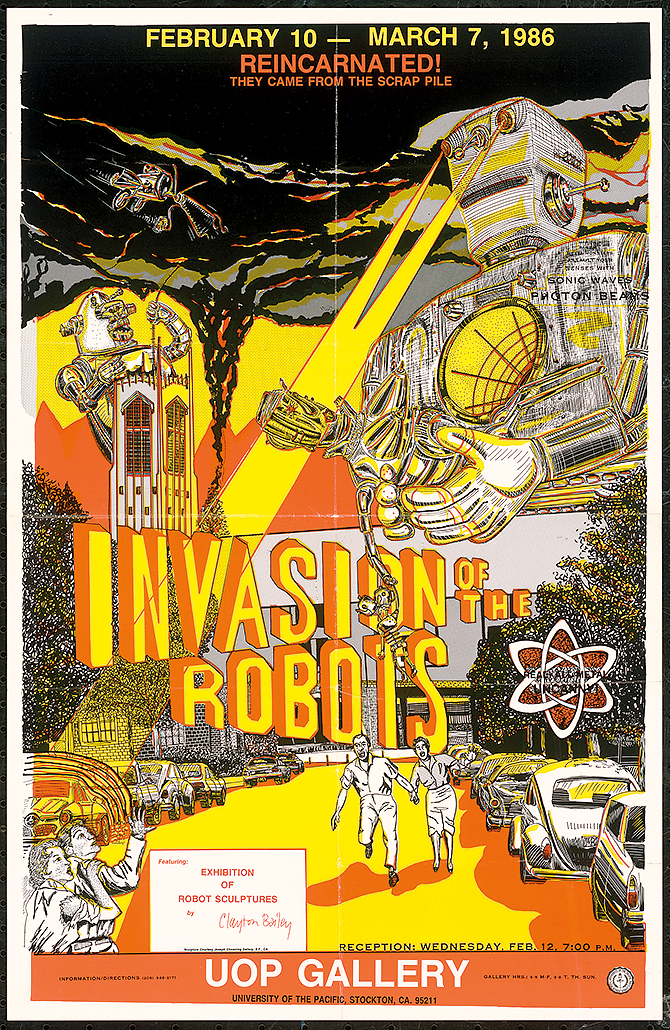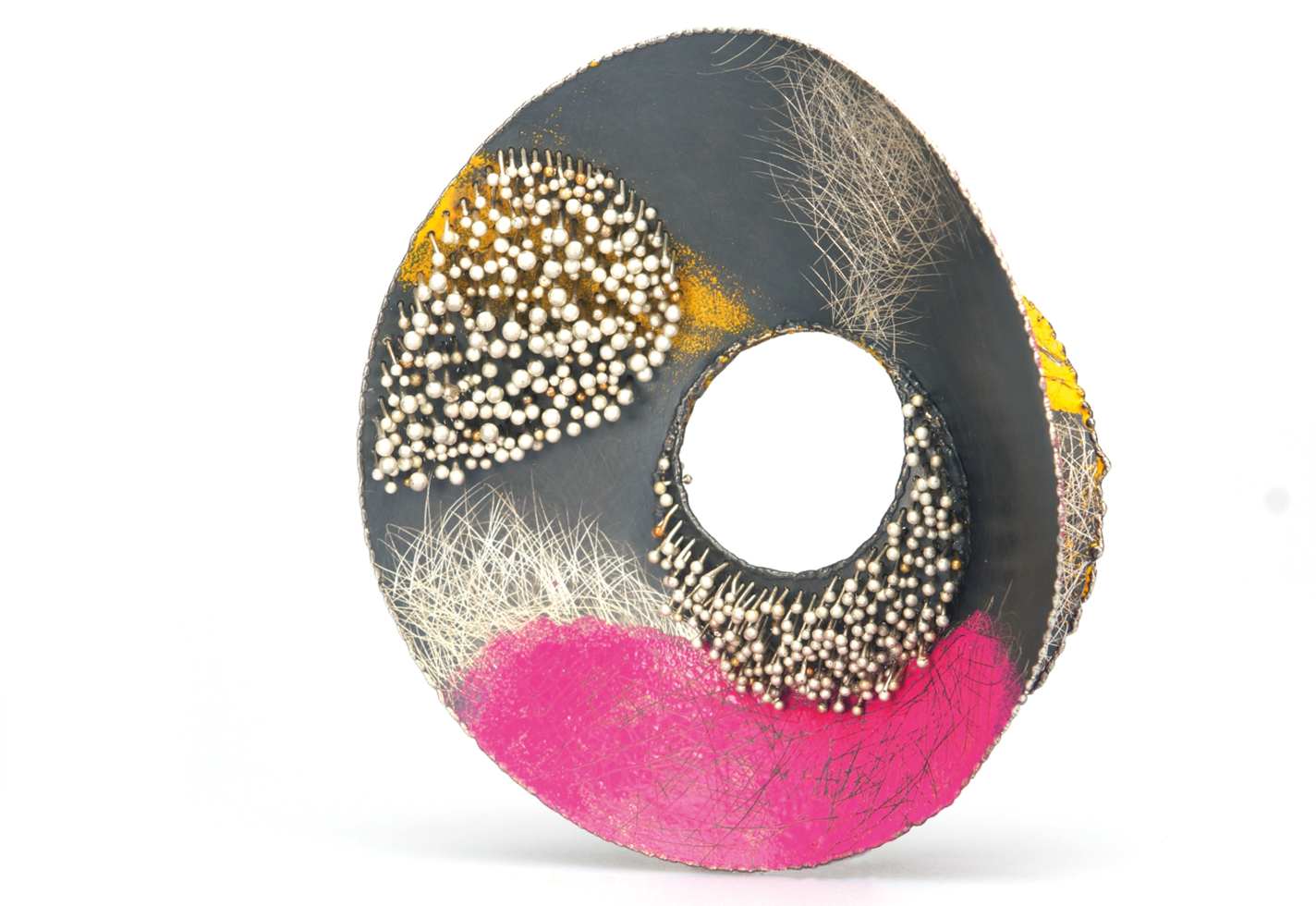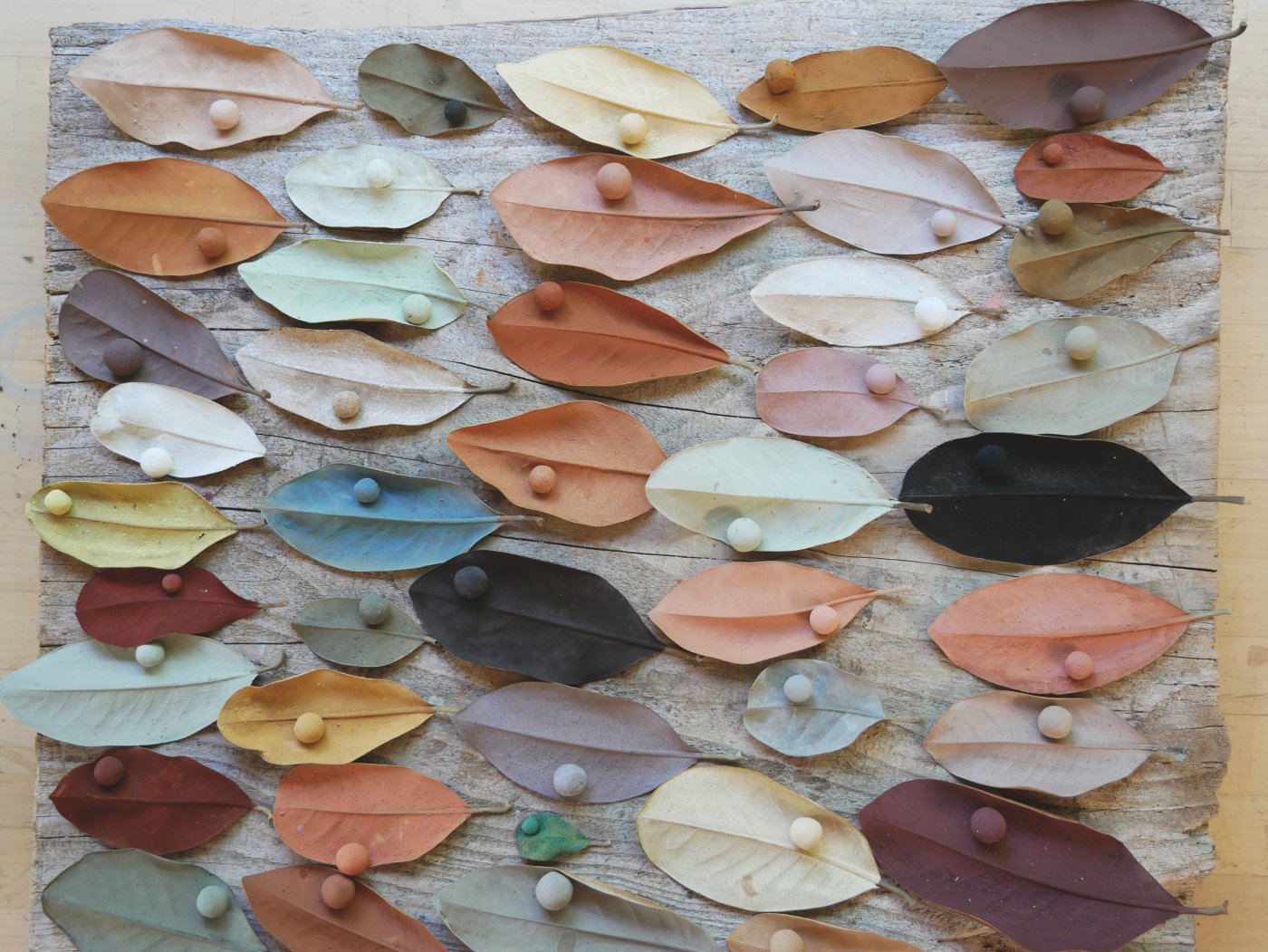Clayton Bailey (1939–2020)
As a leader in the ceramics arm of the funk art movement, Clayton Bailey created sculptures primarily of ceramic, latex, and metal and infused them with humor and a bit of the grotesque. His work was an amalgam of art, science, entertainment, and invention. As an instructor at what was then known as Whitewater University in Wisconsin, Bailey noted that beauty “is an attribute of the familiar and the comfortable. The artist . . . should seek to discover the new and unusual, and should not strive for beauty,” according to the artist’s website.

In a photo for the 1969 Objects: USA exhibition, Clayton Bailey (center) holds a polyurethane grub while his family Robin (left), Kurt (right), and Betty (bottom) wear Chicken Mutant and Evil Eye monster masks near their home in Crockett, California.










